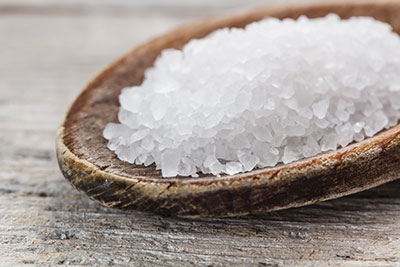
The Final Proof: January-February 2014
February 3, 2014
By Stephanie Ortenzi
New research is shedding light on how imperfect the science of salt really is.
New research is shedding light on how imperfect the science of salt really is.
 |
|
| Some people need more than the “acceptable” limit of salt.
|
It’s been a roller-coaster year for dietary sodium.
A new study claims that the current ideal (1,500 milligrams, or about half a teaspoon, per day) might be lower than it needs to be. Canadians are said to consume about 3,400 mg per day. The new acceptable level appears to be closer to 2,300 mg.
In May, a committee of experts reviewed and reported on the current body of scientific work on safe amounts of dietary sodium, under the aegis of the Institute of Medicine and the Centers for Disease Control and Prevention. The findings of this new study are in a muddle.
Brian L. Strom is that committee’s chair, as well as the chancellor of biomedical and health sciences at Rutgers University. He told the New York Times, in a piece about the report, “As you go below the 2,300 mg mark, there’s an absence of data in terms of benefit, and there begins to be suggestions in subgroup populations about potential harms.”
Salim Yusuf agrees that the science is inadequate. Yusuf is the Heart and Stroke Foundation of Ontario’s chair in cardiovascular disease at McMaster University in Hamilton, Ont. He published a piece in the October 2013 issue of the American Journal of Hypertension. “I’m afraid with salt,” he said, “we are in the mess because we’re making recommendations without good data.”
Samuel Mann agrees. He is a hypertension specialist and professor of clinical medicine at Weill Cornell Medical College, which is affiliated with New York Presbyterian Hospital where Mann also works as an attending physician.
Right out of the gate, he delivers the facts about sodium in our food, “about which there is no disagreement.” On average, high sodium intake causes our blood pressure to rise, which elevates our risk of stroke and heart attack. Dropping sodium levels lowers blood pressure, improves the efficacy of hypertension medication and reduces the amount of medication needed.
That’s our baseline, you could say.
It’s worth knowing that although salt can raise blood pressure, we’re not all salt-sensitive. Even those of us with hypertension may not be salt-sensitive. Drilling down further, “about 25 per cent of whites and 50 per cent of blacks with hypertension are salt-sensitive,” said Mann.
It’s equally valuable to know that some people need more than the “acceptable” limit of salt. Those would be people whose kidneys excrete too much sodium and people whose blood pressure drops drastically when standing.
One teaspoon of salt, it turns out, does not fit all.
Still, on Oct. 17, a task force convened by Hypertension Canada took decisive action and raised the recommended daily limit of sodium from 1,500 mg to 2,000 mg, about “three bran muffins bought at a well-known franchised coffee shop.” I’m guessing Tim Hortons.
Way to cut to the chase, notoriously cautious Canada.
The Baking Association of Canada (BAC) has been diligent in tracking how the bakery industry is doing on a national level when it comes to sodium reduction.
Since 2009, and every two years since, the BAC has conducted studies on sodium reduction because breads and other bread-styled baked products have been identified as the single largest contributor of sodium in the Canadian diet. “The original motivation was to validate our sodium values being discussed by Health Canada,” said Paul Hetherington, president and CEO of the BAC. “And since then we decided to repeat the study every two years to validate the industry’s progress in sodium reduction.”
Looking at the brand leaders of sliced, white, whole-wheat and whole grain breads sold in grocery stores, the BAC’s 2013 study found noticeable decreases. Whole-grain breads showed minimal reduction because they’re low in sodium to begin with. White and whole-wheat breads have dropped their sodium by 11 and 14 per cent respectively, compared to 2009 figures.
“We hope the industry continues its efforts to reduce sodium,” said Hetherington. He advises focusing on the general acceptance that there’s more science to come, with better studies and better data to learn from.
Sodium-reduction science has also been evolving with a tremendously robust output. There are literally hundreds of salt substitutes on the market. If you’re happy with your choice, write in to let us know which substitute you prefer and why because it can be a tough choice to make, and trusted sources are invaluable.
In the event that you’ve ever wondered how salt substitutes work, wonder no more.
“They work in essentially three ways,” explained food technologist Alice Chapman. She specializes in sodium reduction. The first is to change the shape of the crystal, giving it greater surface area and more of a chance to deliver the salt taste. The second is to replace some of the sodium chloride, [50 per cent is considered a good measure], with potassium chloride, which has the downside of having a metallic taste, which technologists mitigate with other flavour formulations. The third way is to use umami flavours – the delicious, savoury, fifth taste [apart from sweet, salty, sour, bitter] – like the ones found in yeast extracts.
With that, consider yourself up-to-date until the next study comes in.
Stephanie Ortenzi (www.pistachiowriting.com ) is a food-marketing writer.
Print this page
Leave a Reply